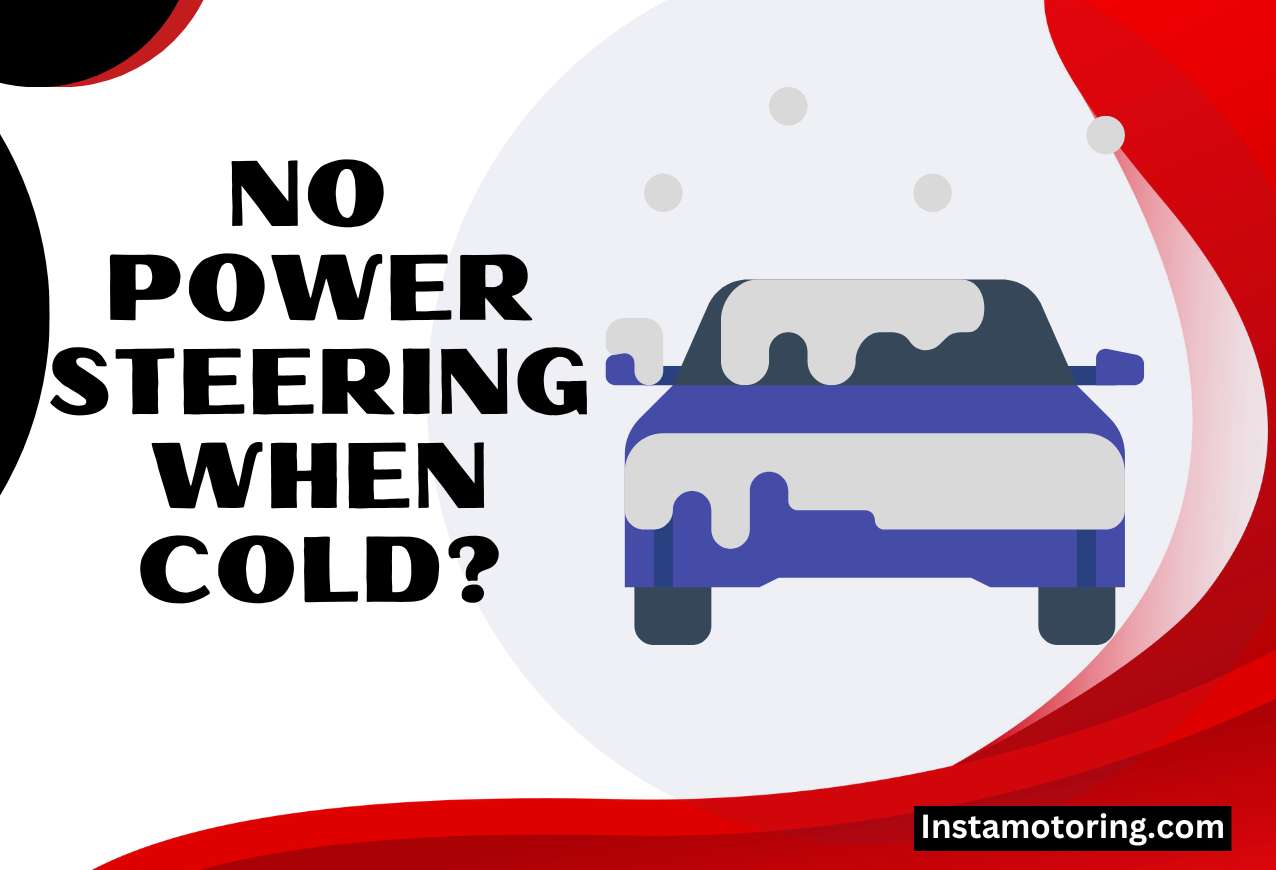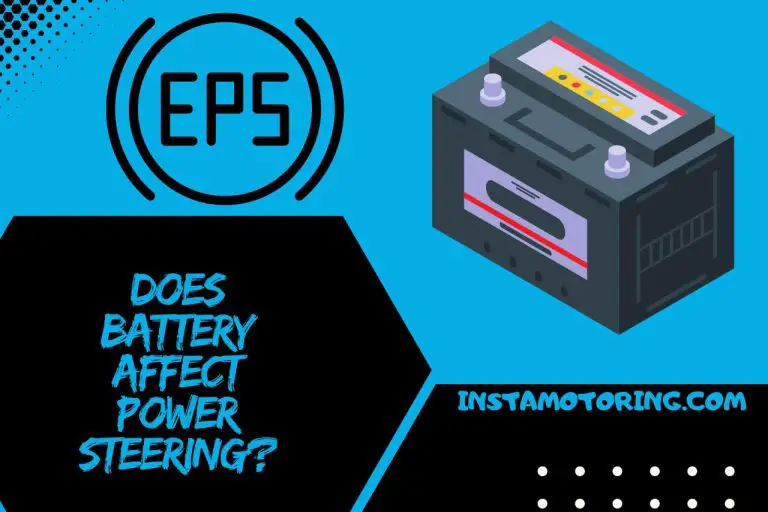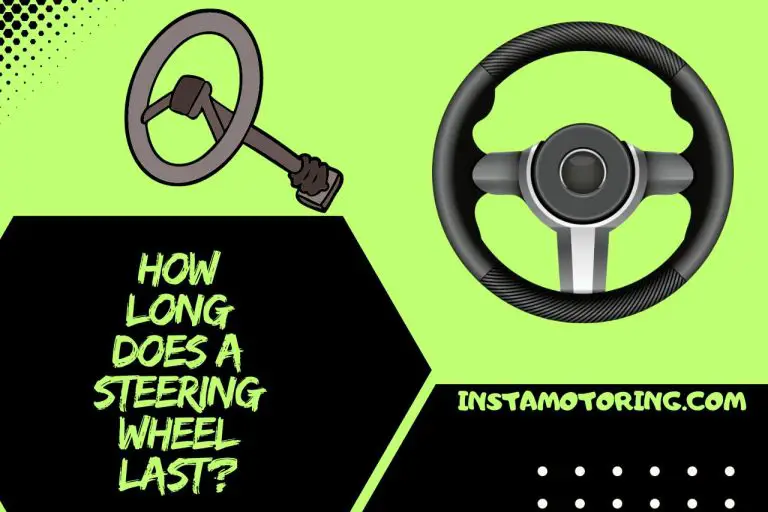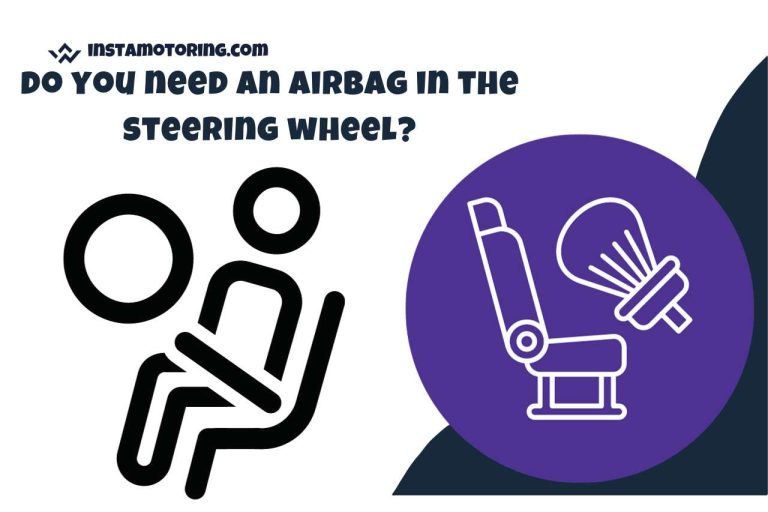No Power Steering When Cold? Do This
If you’ve ever turned the key on a chilly morning only to be met with stiff resistance in your steering wheel, you’re not alone. Yes, when it is cold the power steering fluid tends to become more viscous leaving you feel no power steering when cold.
In this comprehensive article, we will explain everything in detail for you to understand the science behind this and how you can overcome the hurdle.
Why Does My Power Steering Feel Stiff When Cold?
In colder temperatures, your power steering may feel stiff due to the thickening of the power steering fluid. When it’s cold, the fluid becomes more viscous, making it harder for the power steering pump to circulate and apply hydraulic pressure.
This increased resistance can result in stiffer steering and you will feel power steering is not working in cold. Additionally, cold temperatures may impact the overall efficiency of the power steering system, causing it to respond more slowly.
To improve this, allowing your vehicle to warm up before driving or using a power steering fluid that is designed for colder climates can help enhance fluid flow and restore optimal steering performance. We will discuss this in the next section of this article.
Common Signs of Cold-related Power Steering Problems
You may encounter several indicators of cold-related power steering problems. If you’re grappling with stiff or unresponsive steering, it could be a sign that the power steering fluid has thickened in the cold.
Additionally, listen for whining or squealing noises when turning the wheel, as these sounds may signal issues with the power steering pump. A sluggish response during initial turns in cold weather is another red flag.
If you notice these symptoms, addressing the root cause promptly is crucial. Stiff steering and unusual noises may point to decreased fluid flow due to cold temperatures affecting viscosity. Taking action early on can prevent further damage and ensure optimal power steering performance when the mercury drops.
How to Fix Power Steering Issues in Cold Weather
To fix cold power steering issues, you can use the below-mentioned troubleshooting methods.
Use a Cold-Weather Power Steering Fluid
Opt for a power steering fluid specifically designed for colder temperatures. This type of power steering fluid remains more fluid in the cold, ensuring smoother circulation and optimal performance.
As we mentioned earlier, if the power steering fluid fails to flow as it should, difficulties in power steering are inevitable.
Allow Warm-Up Time
Before driving in cold weather, let your vehicle warm up. This allows the power steering fluid to reach a more suitable viscosity, reducing stiffness in the steering system. We know that this might not be feasible all the time, but planning your drive ahead will definitely help in dealing with stiff power steering in cold weather conditions.
Check Power Steering Fluid Levels and Leaks
Ensure the power steering fluid is at the recommended level. Low fluid levels can exacerbate cold-related steering issues, so regularly check and top up as needed.
As a blog that predominantly focuses on the steering side of things, we have discussed enough about the importance of proper power steering fluid and fixing the leaks.
Consider a Thicker Power Steering Fluid Additive
Consult your vehicle’s manual and consider adding a thicker power steering fluid additive if recommended. This can help improve fluid flow in cold conditions.
These additives, often containing lubricating agents and seal conditioners, improve cold-start performance and extend the lifespan of power steering components. Easy to apply, they contribute to smoother operation in low temperatures, making them a practical solution for cold weather conditions.
Check Belts and Hoses
Inspect power steering belts and hoses for wear or damage. Worn-out components can impede the system’s efficiency, especially in cold weather.
Install a Power Steering Heater
A power steering heater is a device that warms the power steering fluid in cold weather. By preventing fluid thickening, it ensures optimal viscosity, enabling smoother system operation.
This helps maintain responsiveness and prevents power steering issues during cold starts. The heater promotes efficient fluid flow, reducing strain on the power steering system and enhancing overall performance in chilly conditions.
long-term Effects of Driving with Cold-related Power Steering Problems
Driving with untreated cold-related power steering problems can have detrimental long-term effects. Here we have listed a few of them.
Increased Wear and Tear
Untreated cold-related power steering problems can accelerate the wear and tear on essential components, such as the power steering pump, hoses, and steering rack.
Permanent Damage
Continuous operation in the presence of cold-related issues may lead to permanent damage to the power steering system, reducing its effectiveness and lifespan.
Compromised Maneuverability
Persistent symptoms like stiff steering and sluggish response can compromise your vehicle’s maneuverability, impacting your ability to navigate safely, especially in emergency situations.
Safety Concerns
Ignoring cold-related power steering problems can pose safety risks as it may affect your ability to steer smoothly, increasing the likelihood of accidents or difficulty in handling unexpected road conditions.
Escalating Repair Costs
Neglecting early signs of power steering issues in cold weather may result in more extensive damage, leading to higher repair costs over time.
Reduced Resale Value
A vehicle with a poorly maintained power steering system may have a diminished resale value, as potential buyers may be deterred by the prospect of addressing existing problems.
Strain on Other Components
Compromised power steering can place additional strain on related components, such as the serpentine belt and the entire steering assembly, potentially causing broader mechanical issues.
Inconsistent Performance
Cold-related power steering problems can result in inconsistent steering performance, making your driving experience less predictable and potentially hazardous.
You May Also Like



My name is James, I work as an Automotive Designer with 9 years of experience. I also work as a mechanic and vehicle inspector. I love deciphering complicated car exteriors and interiors and resolving fluid and oil troubles. InstaMotoring.com is here to help you troubleshoot your car with dependable and expert help.





![Steering Assist Fault Service Required [Causes and Fixes]](https://www.instamotoring.com/wp-content/uploads/2023/08/when-you-update-your-iphone-does-it-delete-everything-8-768x512.jpg)
![Car Won’t Start Power Steering Light on [4 Reasons]](https://www.instamotoring.com/wp-content/uploads/2024/01/Instamotoring.com_-768x524.jpg)
